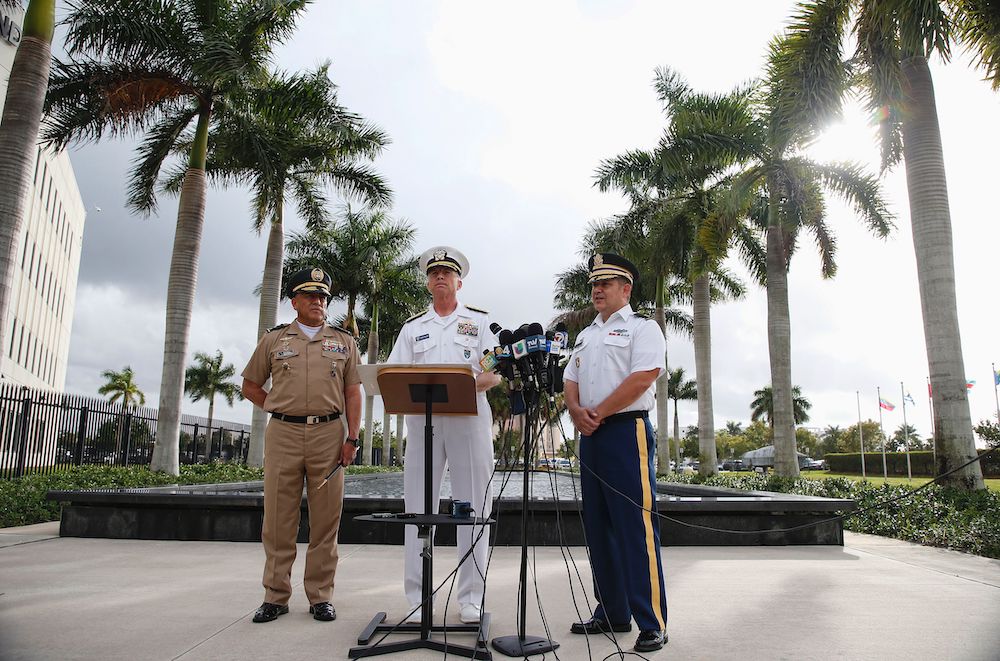This article is adapted from AQ’s special report on Latin America’s armed forces.
The U.S. military has a long history of collaborating with its partners in the Western Hemisphere for our collective security and well-being.
These days, as our National Defense Strategy (NDS) acknowledges, “the central challenge to U.S. prosperity and security is the reemergence of long-term, strategic competition by… revisionist powers.”
At stake is the future of the rules-based international order, which is increasingly undercut by China and Russia. The Western Hemisphere — second only to Western Europe in terms of levels of freedom and respect for human rights — is emerging as a critical space in this competition, a space where corruption, transnational criminal groups, and malign actors create a vicious circle that erodes governance and impacts security.
We have serious threats in our hemisphere, but also tremendous opportunities, especially when it comes to advancing NDS objectives and holding China and others accountable to international standards.
The following is a list of ways these hemispheric partnerships are evolving:
Addressing global challenges. As Americas Quarterly has detailed, many Latin American nations already demonstrate the type of burden-sharing the U.S. seeks to build in other parts of the world. More than 2,100 peacekeepers from the region are currently deployed to UN missions. Beyond contributing to international stability, our partners are gaining coalition experience that can be applied to a range of threats, both in our neighborhood and beyond.
Additionally, many neighbors are net exporters of security, contributing military capabilities to meet global challenges, hosting major exercises and leading security cooperation with other partners. Recently designated a Major non-NATO ally, Brazil co-hosted UNITAS (the U.S. Navy’s longest-running exercise) and is deepening security cooperation with West Africa.
Colombia — NATO’s only global partner in the region — is sharing its humanitarian expertise in de-mining and countering improvised explosive devices with NATO allies while also serving in the United Nations Command in South Korea, a commitment that stems from its participation in the Korean War. El Salvador contributed more than twelve rotations to Iraq and Afghanistan, and has been deployed to the UN mission in Mali since 2015. Trinidad and Tobago works closely with the U.S. and international partners to target extremist networks with ties to Islamic State group and other dangerous groups.
Contributions to hemispheric defense. Closer to home, our partners are also doing more to share in the responsibility of our common defense.
Colombia is helping us with Central America’s challenges, training 1,300 military and police from six Central American countries through the U.S.-Colombia Action Plan. Guatemala and El Salvador are applying U.S.-provided training and equipment to regularly interdict drug shipments more than 100 miles from shore, while Panama leverages cooperation with the U.S. to identify and stop known or suspected terrorists. Jamaica regularly deploys personnel to regional disaster response efforts, and is expanding information sharing to help shut down international drug and weapons smuggling routes.
Reinforcing democratic values. The NDS directs the U.S. military to “sustain advantages in the Western Hemisphere.” Of those advantages, one of the most important is shared democratic values. Those values are reflected in the collective expectations held by all nations in the Western Hemisphere: that any nation seeking to build relationships should respect the Inter-American principles of peace, stability, good governance, and human rights. Latin America could be an example to other regions by holding China accountable to these norms, while still benefiting from Chinese investment.
Furthermore, events in Bolivia, Peru, Ecuador, Chile and Brazil demonstrate that apolitical, professional militaries that protect the rights of their citizens have become the standard, which is critical during volatile, politically-charged situations. Coupled with continued anti-corruption efforts, Latin America and the Caribbean could serve as a model for the rest of the world, especially for countries whose publics are struggling to identify the value (and resiliency) of democratic governance.
A call for engagement. The vicious circle of threats affecting our hemisphere is real, and they demand a sense of urgency. But so do the opportunities.
Everywhere we look, we see willing and capable militaries and security forces that want to do more, on their own, and with the United States. We’ve only just started to scratch the surface when it comes to what our partners can do, and how they can contribute leadership, capabilities, and resources to our collective security and readiness.
We must move, or risk missing out, on the significant returns afforded by engaging with our friends and neighbors. The right, focused attention and modest investments go a long way in our neighborhood. This is by no means limited to the U.S. military — we need the whole team on the field to compete: our diplomatic, development, and law enforcement partners, and our private sector, academic and NGO leaders.
In the words of President John F. Kennedy, “Our hemisphere’s mission is not yet completed.” Begun in Philadelphia in 1776, and in Caracas in 1811, this mission remains as compelling today as it was then: to realize the Western Hemisphere’s potential to be the most democratic, prosperous and secure region on earth. It’s time to get to work.
—
Admiral Faller is the commander of U.S. Southern Command








